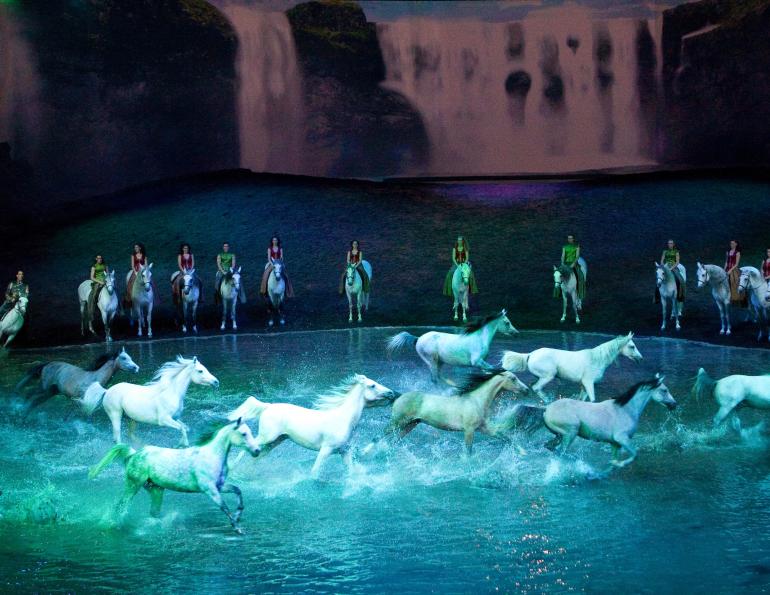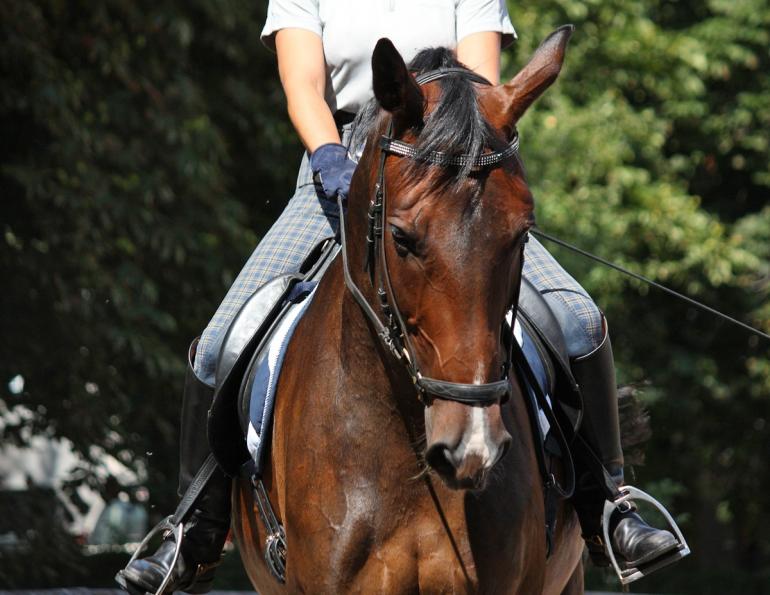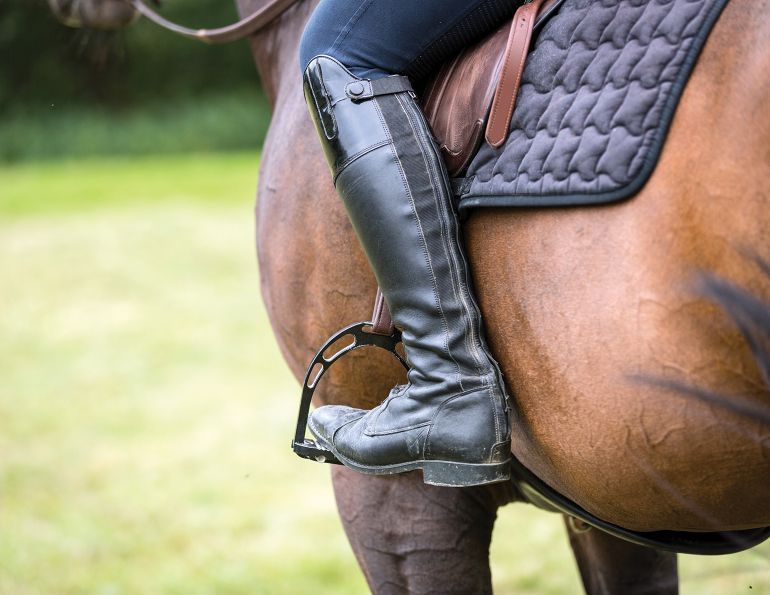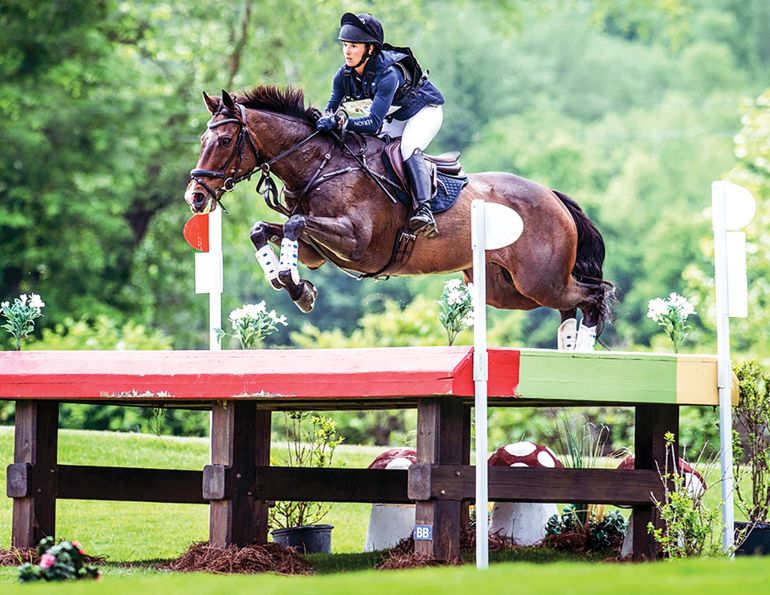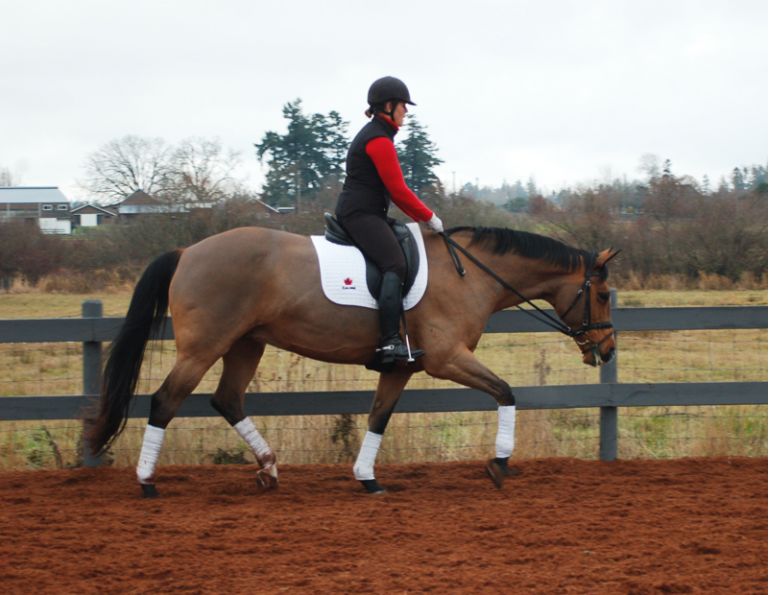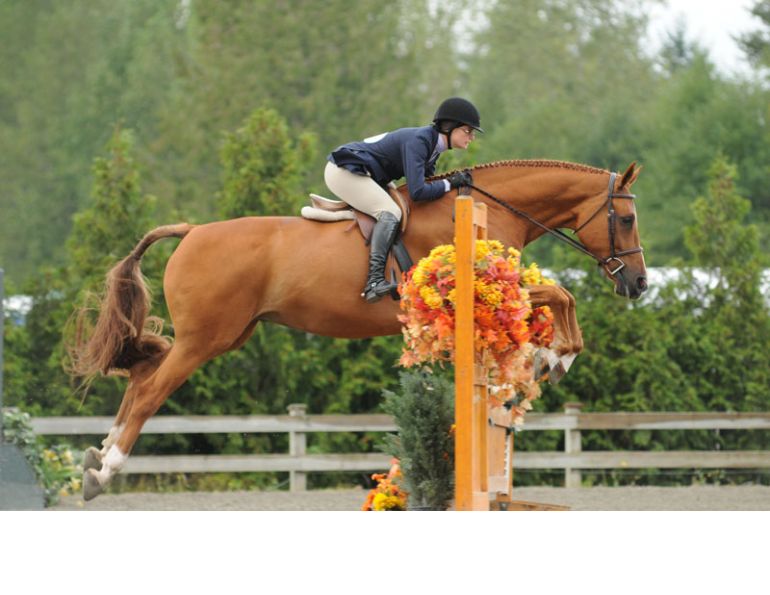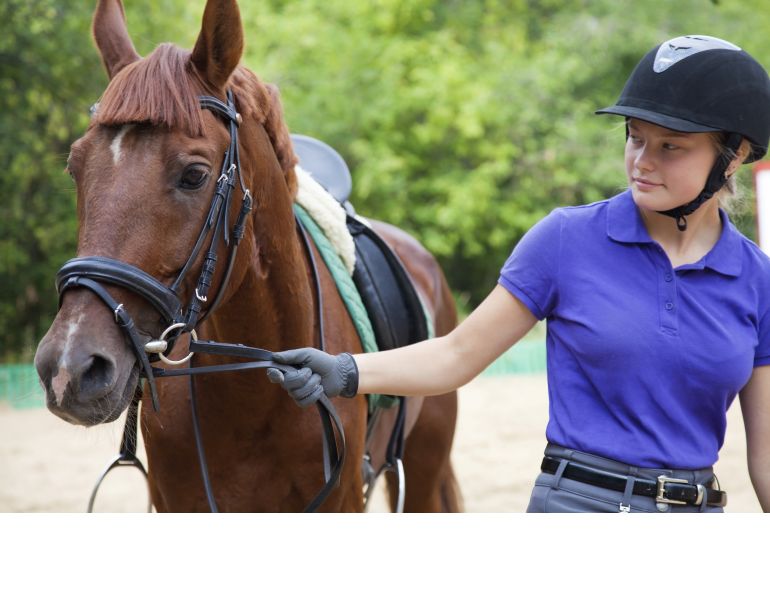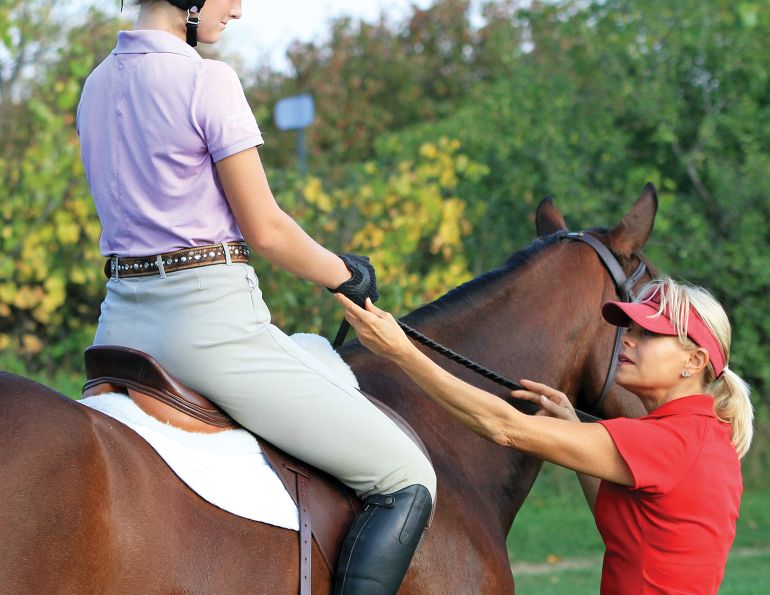With Sandra Verda-Zanatta
By Jess Hallas-Kilcoyne
“In a straight horse, the hind hoof steps into or over the track of the front hoof on the same side, whether on a straight line, circle, or curve,” says dressage trainer, coach, and FEI rider Sandra Verda-Zanatta. “The shoulders of the horse should be in line with his hips. Control of the shoulders and hindquarters is necessary to align the horse’s spine so that it overlaps the line of travel. Straightness allows the horse to develop its musculature symmetrically, improving its gymnastic ability and reducing tension. This enables the horse to move with optimum power which in turn maximizes performance.”
In order for the horse to be straight, the rider must also be straight, which, according to Sandra, means “sitting in the middle of your horse with the centre of your body (your belly button is a good landmark) lined up with the horse’s withers, equal feeling in both seat bones, both stirrups, and both reins.” Only then can you begin to influence your horse to be straight.
To accomplish this, Sandra suggests that you “think of creating a narrow tunnel with your legs and reins and ride your horse through the tunnel. Imagine that you have arrows on your hips pointing forward and elastic bands that pull the horse’s hind legs forward to step underneath your seat bones toward his chin without deviating to the left or right,” Sandra suggests.
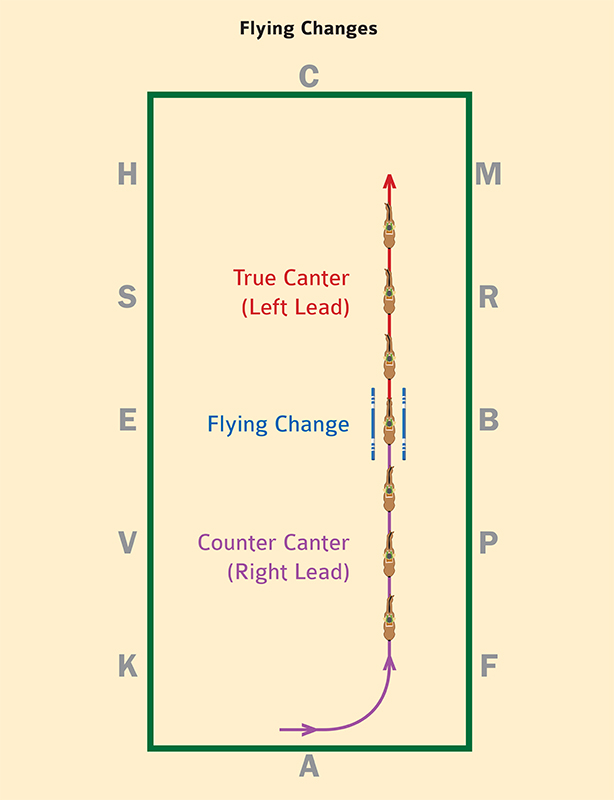
Flying Change through the Tunnel
You can also create a real tunnel with raised poles or cavaletti. Sandra finds this tool helpful for more advanced exercises such as improving straightness in the flying change.
Exercise: Flying Change through the Tunnel
Create a “tunnel” by placing two raised poles or cavaletti approximately four feet apart, one on either side of the quarterline, near B or E. In a forward, clear three-beat canter, ride straight through the tunnel a couple of times in both directions. Next, you can progress to riding through the tunnel in counter canter, again in both directions. Finally, when you feel that the horse is in good balance and responding appropriately to your aids, establish right lead counter canter on the left rein and ride up the quarterline. Your right leg should be at the girth maintaining impulsion and a slight right bend while your left leg is slightly behind the girth supporting the horse’s hindquarters; your right rein asks for slight flexion to the right while your left rein controls the degree of flexion, the tempo, and the horse’s shoulder.
As you enter the tunnel, sit tall, half-halt, straighten and ask for flying change using a clear, definite aid with the new outside leg (right leg). Remember to sit back to help horse stay balanced and let the walls of the tunnel assist you in keeping the horse straight so that you can focus on riding him forward into, through, and out of the change. It is helpful for your balance and straightness to pick a focal point on the wall ahead as you ride your line.
“A late change, one that’s close behind, or crookedness can indicate that the canter is not forward enough or the horse is not responding to your leg aid immediately,” says Sandra. “In order to develop straightness, you must ride forward with energy and ensure you have a good reaction your leg. Remember to ride forward to the change, and then balance, and then ride forward after the change.”
You can also use a slight shoulder-fore position to help improve your horse’s straightness, balance, and stability before the change.
As you exit the tunnel, ride as if you were going to ask for another change. This will promote better uphill balance and impulsion. Ride straight in left lead canter to the end of the long side where you can either ride a large circle, working on improving the canter, or transition to walk, turn, and come back through the tunnel again. For sake of consistency and rider/horse communication, it is beneficial to repeat the exercise and ride the same change several times in a row before trying the other side.
Main photo: Craig MacCubbin/Wikimedia Commons - Straightness, and its positive effect on the horse's balance and relaxation, are essential ingredients to a correctly executed flying change, as Olympic gold medalist Isabell Werth demonstrates in this photo.




